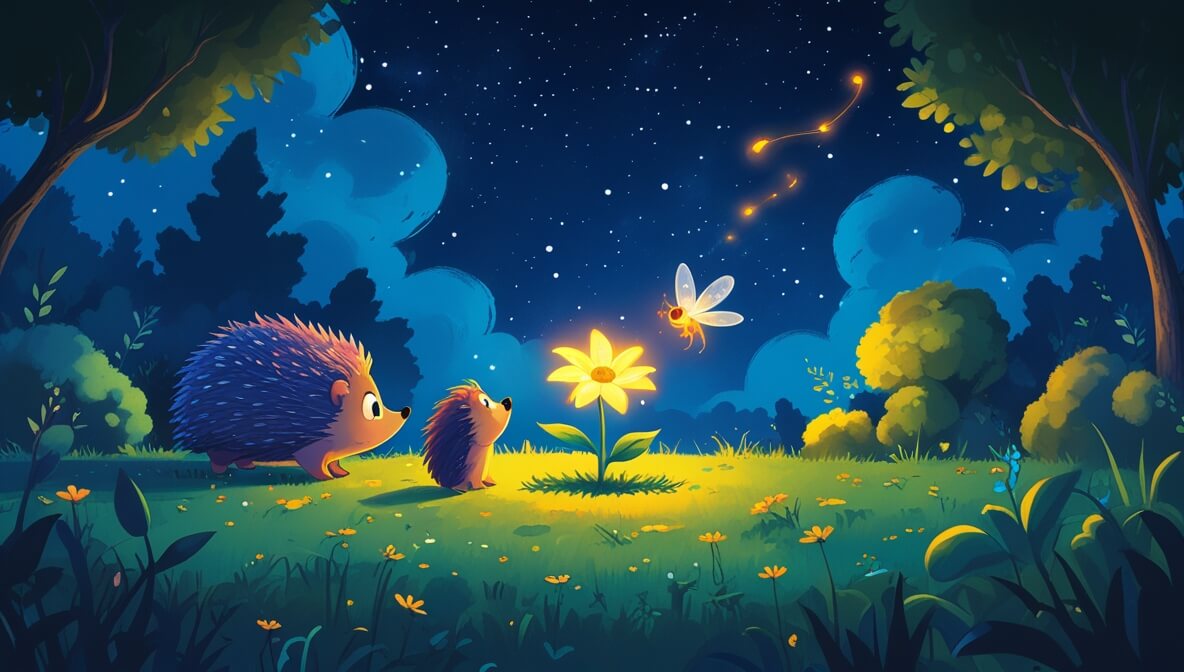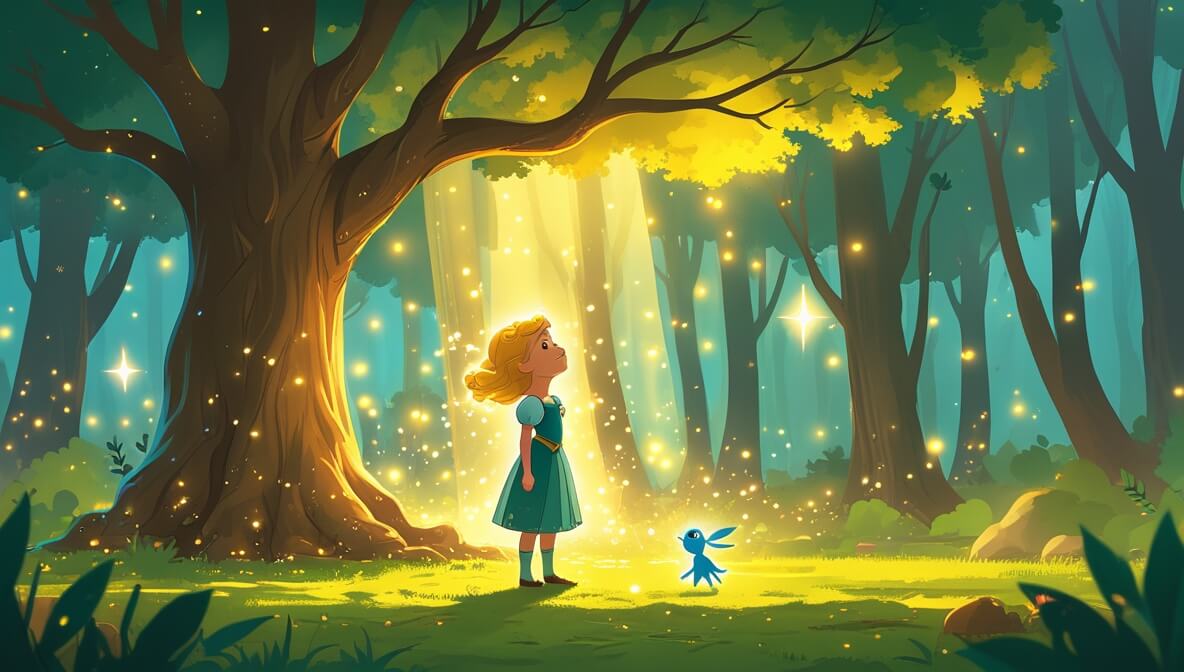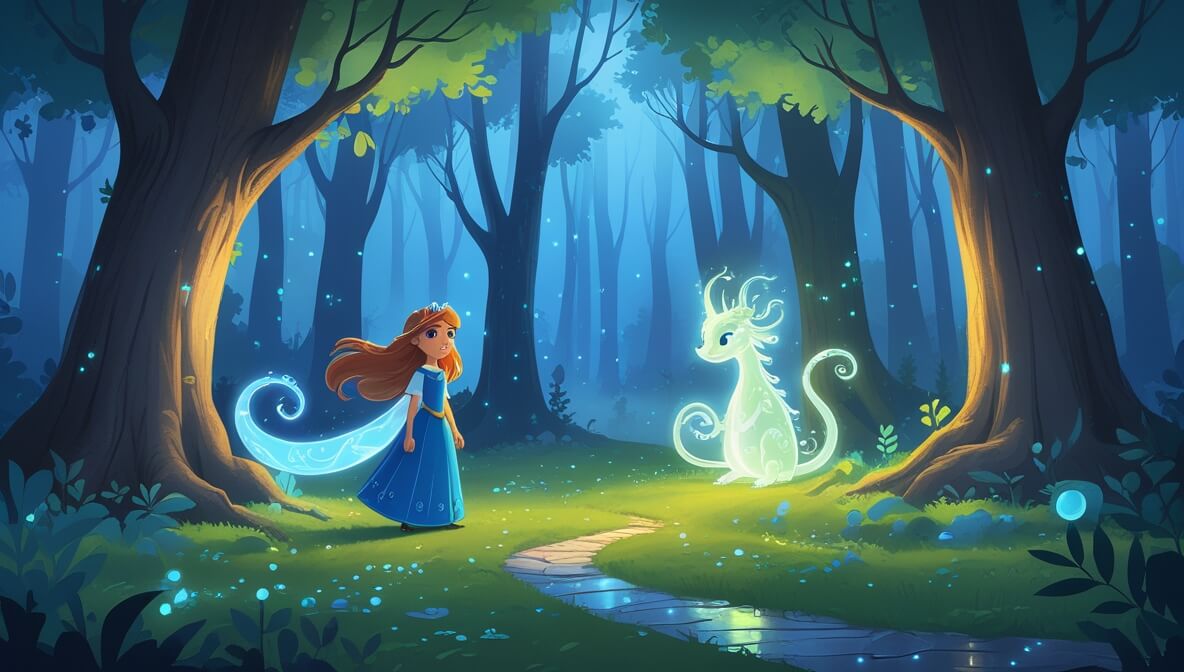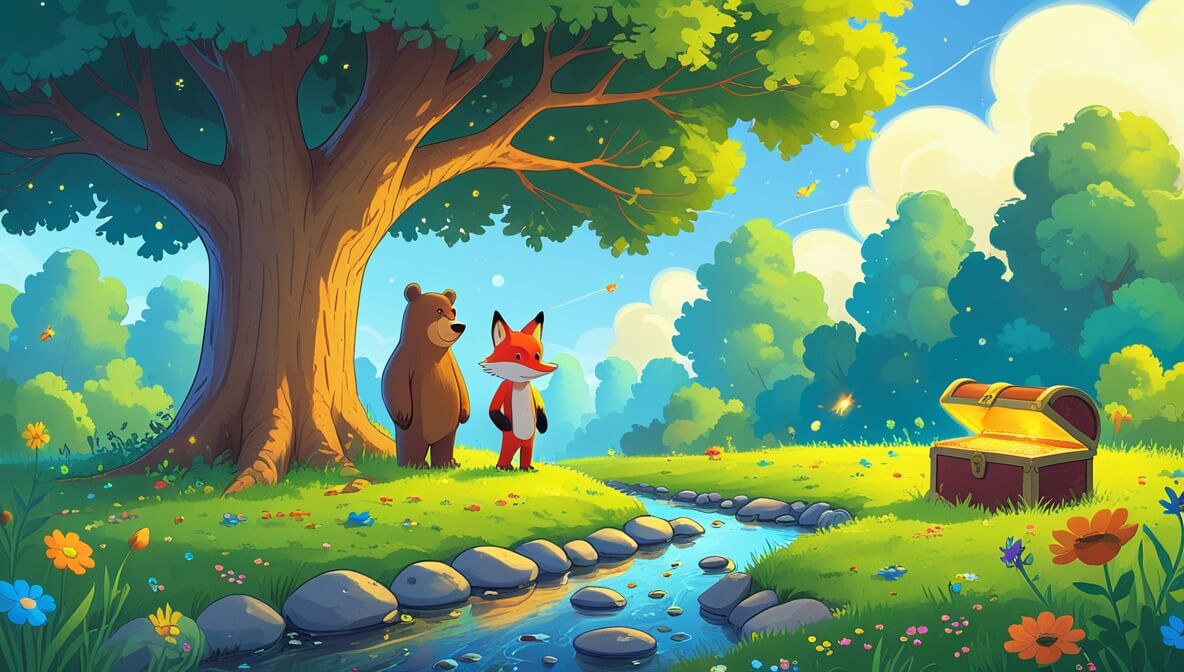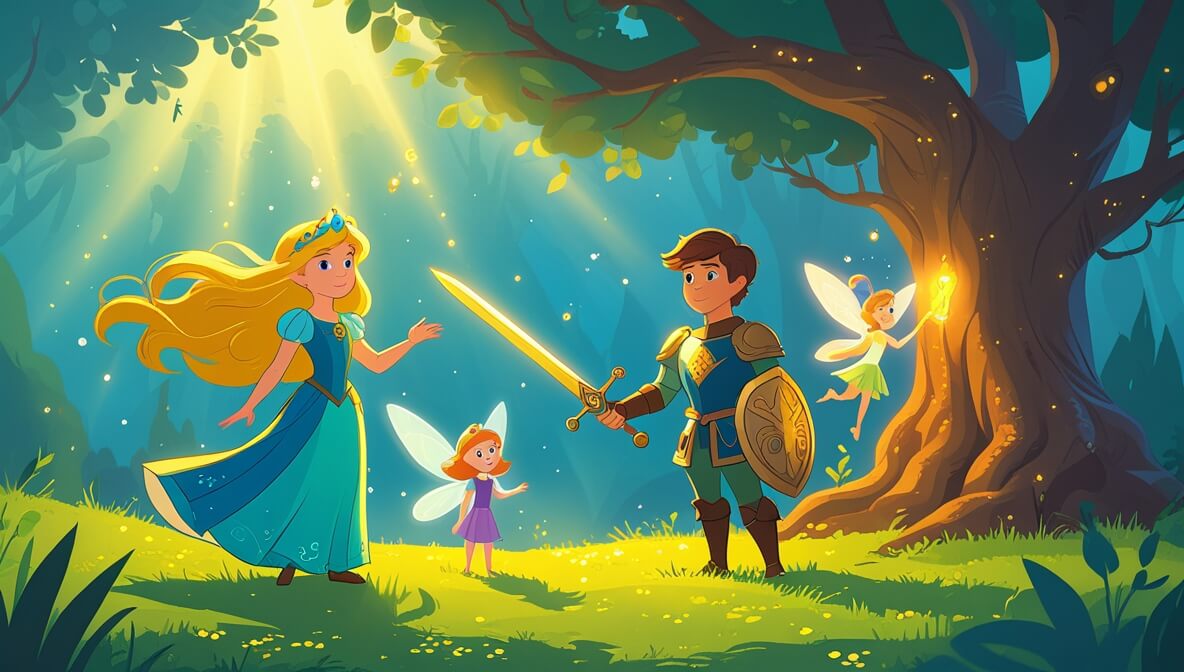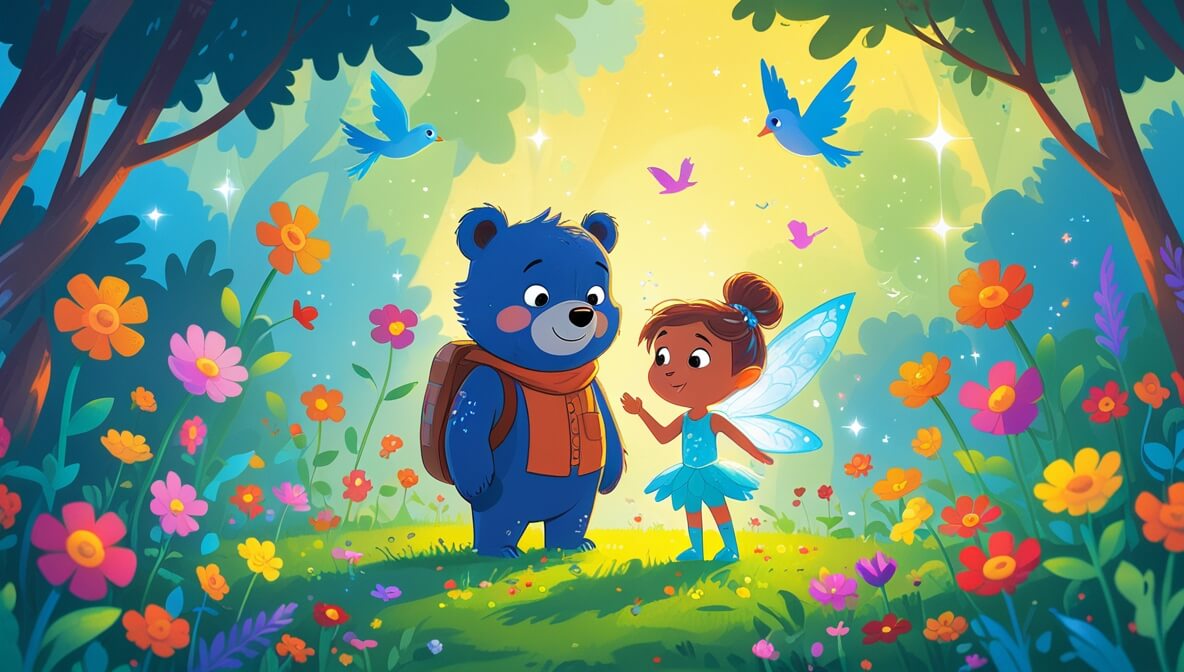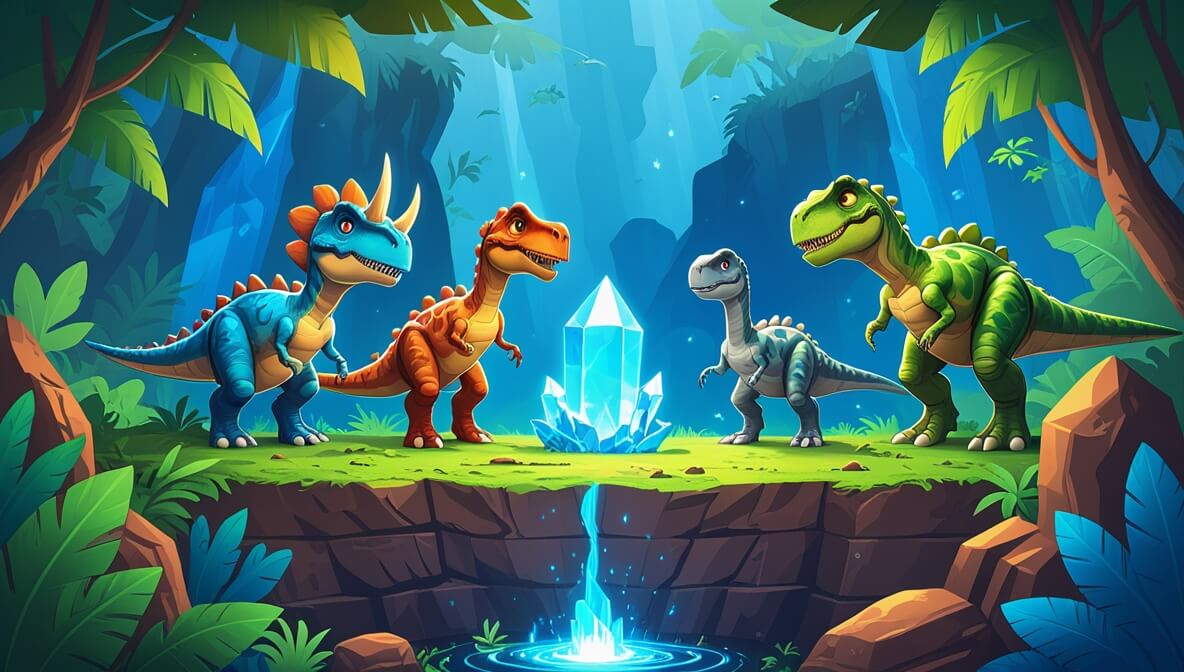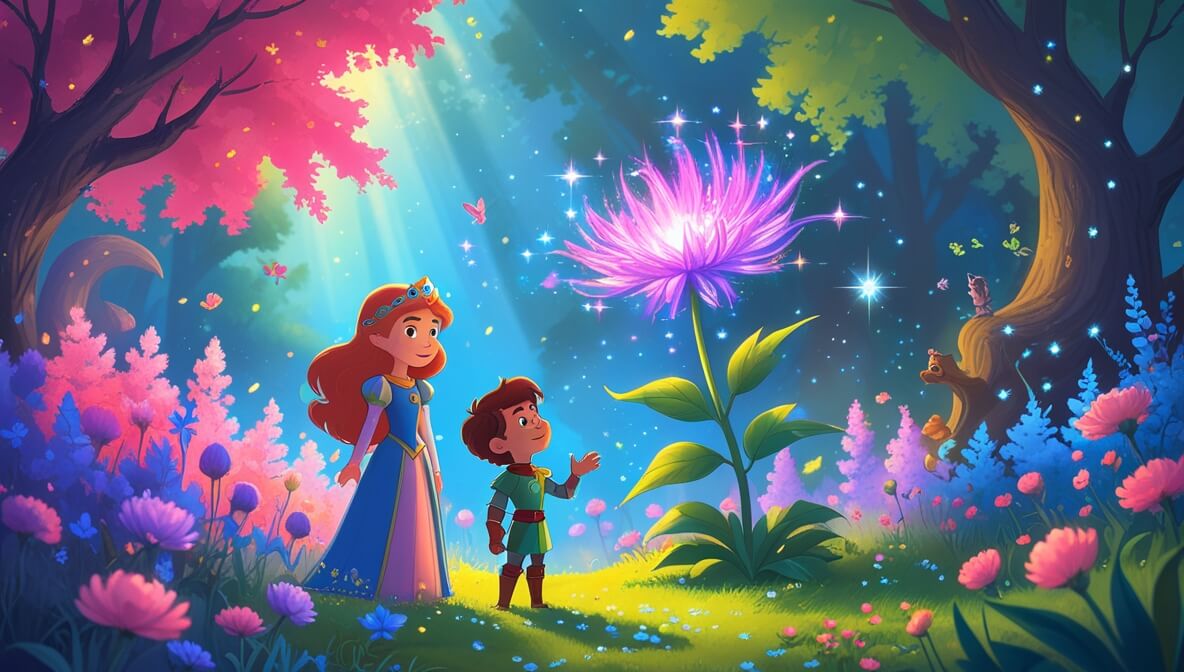In a cozy garden, a little hedgehog finds a magical flower that glows under the moonlight, and learns about the magic of friendship.
Age Recommendation
0 – 4 years
Characters
Characters:
- Nibby the Hedgehog (A curious little hedgehog with a soft, spiky back)
- Luna the Firefly (A bright firefly who loves to explore the night)
Story
In a cozy garden, Nibby the Hedgehog was getting ready for bed. He tucked himself into a pile of leaves, but just as he was about to fall asleep, he saw a tiny glow. It was a magical flower that only bloomed under the moonlight. Curious, Nibby waddled over to see it up close.
The Magical Flower’s Glow
Luna the Firefly fluttered by and landed on the flower. “Hello, Nibby!” she chirped, her light shining brightly. “This flower is special. It only glows when it’s happy.” Nibby was amazed. He had never seen anything like it before.
Under the Moonlight
“Can we make it glow more?” Nibby asked. Luna giggled. “Of course! Just be happy and kind, and it will glow brighter.” Nibby smiled and gently patted the flower. To his surprise, the flower’s glow became even brighter, lighting up the whole garden.
Learning About Friendship
“Thank you for showing me this,” Nibby said to Luna. She twinkled happily. “That’s what friends are for,” she replied. Nibby felt warm and fuzzy inside. He realized that friendship was like the magical flower—it glows when you share happiness and kindness.
The end.
Moral of the Story
Friendship is like a magical flower that glows brighter with kindness and happiness. Sharing joy and being kind makes life beautiful.
Questions to Think About
- How did Nibby feel when he saw the glowing flower?
- What makes the flower glow brighter?
- Why is Luna important to Nibby?
- What did Nibby learn about friendship?
- Can you think of a time when you made someone happy?
Do You Know
- Fireflies light up because of a chemical reaction in their bodies, called bioluminescence.
- Hedgehogs are nocturnal, which means they are awake at night and sleep during the day.
Word Explorer
- Cozy: Comfortable and warm.
- Glow: To shine with a soft light.
- Nocturnal: Active at night.
Emotions in the Story
- Curiosity: When Nibby first saw the glowing flower.
- Happiness: When the flower glowed brighter after Nibby patted it.
- Warmth: When Nibby learned about the magic of friendship.
Color Your Scene
Imagine the garden at night with a glowing flower and Luna the firefly lighting up the scene. Use colors like soft yellow for the glow, dark green for the leaves, and a deep blue for the night sky. Draw Nibby smiling at the flower.
Parents’ Corner
This story is a wonderful way to discuss the importance of kindness and friendship with your child. Encourage them to think about the ways they can be kind to their friends and how it makes them feel when someone is kind to them. You can also talk about the beauty of nature and explore how different creatures like fireflies bring magic to our world.

